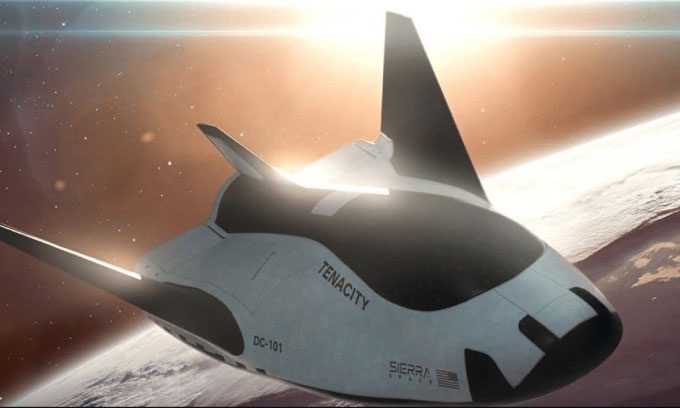Tenacity, the cargo spacecraft for the ISS, enters final preparation phase ahead of its first launch in late 2024.
The world’s first commercially operated winged spacecraft, Tenacity, has arrived at NASA’s Kennedy Space Center in Florida, USA, as reported by New Atlas on May 20. This is the final destination before the spacecraft embarks on its inaugural mission to the International Space Station (ISS) later this year.

Simulation of the Tenacity spacecraft. (Image: Sierra Space).
After undergoing rigorous testing at the Neil Armstrong Test Facility in Ohio, Tenacity, the first spacecraft in the Dream Chaser series developed by the American company Sierra Space, is now ready to begin its final preparations before launch, including completing thermal protection systems and integrating payloads. The inaugural launch is expected to take place at the end of this year, during which Tenacity will “hitch a ride” on the Vulcan rocket from United Launch Alliance (ULA) to transport 3,540 kg of food, water, and scientific experiment kits to the ISS.
Dream Chaser has been under development since September 2004 and was initially intended to be part of NASA’s Commercial Crew Program, which facilitates the transport of astronauts to and from the ISS. However, it was overshadowed by the contracts awarded to Boeing and SpaceX in 2014, when both companies signed the Commercial Crew Transportation Capability (CCtCap) agreement worth $6.8 billion.
Not long after, Dream Chaser caught NASA’s attention again. In 2016, a more compact, uncrewed version of the spacecraft was selected by NASA as the first of its kind to transport critical cargo to the ISS, as well as bring cargo back to Earth.
Assembly process of the spacecraft and the Shooting Star module. (Video: Sierra Space).
Tenacity will be the first in a fleet of flexible, reusable lifting-body spacecraft designed for low Earth orbit deliveries. The spacecraft is equipped with internal thrusters that provide three modes for precise landing at the ISS, and fixed wings that allow it to re-enter Earth’s atmosphere and autonomously land on the runway at Kennedy Space Center.
Shooting Star, the cargo module attached to Tenacity, arrived at Kennedy Space Center on May 11 and will not return to Earth intact. This compact module, measuring 4 meters in length, can carry up to 3,175 kg of cargo and features an additional external storage compartment designed to burn up upon re-entry. Shooting Star, along with approximately 2,590 kg of waste, will disintegrate in a “burn-up” process powered by Earth’s atmospheric pressure.
Tenacity is expected to launch from Launch Complex 41 at Cape Canaveral Space Force Station and will dock with the ISS for about 45 days, after which it will “say goodbye” to the cargo module and descend to land on the runway at Kennedy Space Center.
Sierra Space plans to operate a production line to assemble Shooting Star modules. Each mission requires a new module, as they cannot be reused. NASA will conduct at least seven cargo missions with Tenacity, with the potential to increase the spacecraft’s payload capacity and extend missions to 75 days in the future.




















































